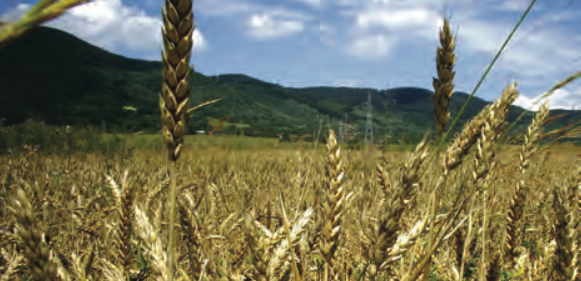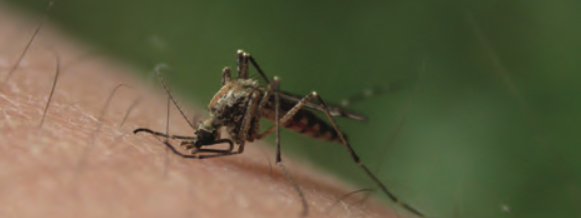Applications
The Early Adopters are a subset of the SMAP Application Working Group (AppWG). The goal of the SMAP Early Adopter Program is to provide specific support to Early Adopters in pre-launch applied research to facilitate feedback on SMAP products pre-launch, and accelerate the use of SMAP products post-launch. In a written, signed Summary of Activities (SOA), Early Adopters agree to:
- Engage in pre-launch research that will enable integration of SMAP data after launch in their application;
- Complete the project with quantitative metrics prior to launch;
- Join the SMAP Applications Team to participate in discussions of SMAP mission data products related to application needs; and
- Participate in the implementation of the SMAP Applications Plan by taking lead roles in SMAP applications research, meetings, workshops, and related activities.
In turn, the SMAP Project agrees to:
- Incorporate the Early Adopter contributions into the SMAP Applications Plan;
- Provide Early Adopters with simulated SMAP data products via the SMAP Science Data System (SDS) Testbed; and/or
- Provide Early Adopters with planned pre-launch calibration and validation (cal/val) data from SMAP field campaigns, modeling, and synergistic studies.
The Early Adopter nomination and selection process begins with the request for nomination (RFN) made to the SMAP AppWG, posted on the SMAP website, and sent to relevant list servers. The first RFN was scheduled to follow the establishment of the SMAP AppWG at the 1st SMAP Applications Workshop. Subsequent announcements were made annually. After 2 announcements, an open request for nomination was instituted, accepting nominations at any time with an ad hoc review and selection by the Applications Team.
A “SMAP Point of Contact” associated with the SMAP Mission was assigned to each new Early Adopter to help the Early Adopters get access to and resolve issues with SMAP pre-launch data sets; to facilitate their research and receive feedback to the SMAP project on research metrics; and to report on EA successes, challenges and progress during SMAP SDT meetings.
Early Adopters Projects
More than fifty Early Adopters have been selected to date. Interaction is facilitated through quarterly conference calls with all Early Adopters, the SMAP project team, and the SMAP science team. The applied research underway by Early Adopters provides fundamental knowledge of how SMAP data products can be scaled and integrated into users’ policy, business, and management activities to improve decision-making efforts. A special collection of papers was published in the Journal of Hydrometeorology (JHM) highlighting pre-launch research of the SMAP Early Adopters (Special Collection of J. of Hydrometeorology). Results of post-launch applications are highlighted in the links below.

Weather and Climate Forecasting
Assimilation and impact evaluation of observations from the SMAP mission in Environment Canada's Environmental Prediction Systems
Stephane Bélair and Marco Carrera, Meteorological Research Division, Environment and Climate Change Canada (ECCC); SMAP Contact: Stephane Bélair
Monitoring SMAP soil moisture and brightness temperature at ECMWF
Lars Isaksen and Patricia de Rosnay, European Centre for Medium-Range Weather Forecasts (ECMWF); SMAP Contact: Patricia de Rosnay
Transition of NASA SMAP research products to NOAA operational numerical weather and seasonal climate predictions and research hydrological forecasts
Xiwu Zhan, Michael Ek, John Simko and Weizhong Zheng, NOAA National Centers for Environmental Prediction (NCEP), NOAA National Environmental Satellite Data and Information Service (NOAA-NESDIS); SMAP Contact: Randy Koster
Integration of SMAP freeze/thaw product line into the NOAA NCEP weather forecast models
Michael Ek, Marouane Temimi, Xiwu Zhan and Weizhong Zheng, NOAA National Centers for Environmental Prediction (NCEP), NOAA National Environmental Satellite Data and Information Service (NOAA-NESDIS), City College of New York (CUNY); SMAP Contact: Chris Derksen
Use of SMAP-derived inundation and soil moisture estimates in the quantification of biogenic greenhouse gas emissions
John Galantowicz, Atmospheric and Environmental Research, Inc. (AER); SMAP Contact: John Kimball
Data assimilation of SMAP observations, and impact on weather forecasts in a coupled simulation environment
Jonathan Case, Clay Blankenship and Bradley Zavodsky, NASA Short-term Prediction Research and Transition (SPoRT) Center; SMAP Contact: Dara Entekhabi
LINK 1 | LINK 2 | LINK 3 | LINK 4
Hurricane power outage prediction
Steven Quiring and Brent McRoberts, Ohio State University and Texas A&M University; SMAP Contact: Dara Entekhabi

Droughts and Wildfires
The use of SMAP soil moisture data to assess the wildfire potential of organic soils on the North Carolina Coastal Plain
Jim Reardon and Gary Curcio, US Forest Service (USFS); SMAP Contact: Dara Entekhabi
Incorporating soil moisture retrievals into the FEWS Land Data Assimilation System (FLDAS)
Chris Funk, Amy McNally and James Verdin, USGS & UC Santa Barbara; SMAP Contact: Narendra Das
Evaluation of SMAP soil moisture products for operational drought monitoring: potential impact on the U.S. Drought Monitor (USDM)
Brian Wardlow and Mark Svoboda, Center for Advanced Land Management Technologies (CALMIT), National Drought Mitigation Center (NDMC); SMAP Contact: Narendra Das
Soil moisture in Alaskan ecosystem soils
Javier Fochesatto, University of Alaska; SMAP Contact: John Kimball
Integrating SMAP into the Global Integrated Drought Monitoring and Prediction System: Toward near real-time agricultural drought monitoring
Amir AghaKouchak, University of California, Irvine; SMAP Contact: Dara Entekhabi
Satellite soil moisture accuracy evaluation for hydrological operative forecasting (SMAHF)
Renato D’Auria, ALTEC S.p.A.; SMAP Contact: Randy Koster
Using SMAP data to improve drought early warning over Texas and the U.S. Great Plains
Rong Fu, University of Texas Austin; SMAP contact: Randy Koster

Floods and Landslides
Application of a SMAP-based index for flood forecasting in data-poor regions
Kashif Rashid and Guy Schumann, UN World Food Programme and Remote Sensing Solutions, Inc.; SMAP Contact: Vanessa Escobar
Development of a strategy for the evaluation of the utility of SMAP products for the Global Flash Flood Guidance Program of the Hydrologic Research Center
Konstantine Georgakakos, Hydrologic Research Center; SMAP Contact: Narendra Das
Use of SMAP soil moisture products for operational flood forecasting: data assimilation and rainfall correction
Luca Brocca, Research Institute for Geo-Hydrological Protection, Italian Dept. of Civil Protection; SMAP contact: Dara Entekhabi
Satellite enhanced snowmelt flood predictions in the Red River of the North Basin
Jennifer Jacobs, University of New Hampshire; SMAP contact: Steven Chan
Improving the Global Flood Monitoring System (GFMS) with GPM precipitation, SMAP soil moisture and surface water mask information
Huan Wu, Xiwu Zhan, and Robert F. Adler, NASA Jet Propulsion Laboratory (JPL), and NOAA/NESDIS/STAR; SMAP contact: Seungbum Kim
Use of SMAP data for early detection of inland flooding
G. Robert Brakenridge, Dartmouth Flood Observatory, University of Colorado; SMAP contact: Seungbum Kim

Agricultural Productivity
Soil moisture monitoring in Canada
Catherine Champagne, Agriculture and Agri-Food Canada (AAFC); SMAP Contact: Stephane Bélair
US National cropland soil moisture monitoring using SMAP
Zhengwei Yang and Rick Mueller, USDA National Agricultural Statistical Service (NASS); SMAP Contact: Wade Crow
SMAP for crop forecasting and food security early warning applications
Amor Ines and Stephen Zebiak, International Research Institute for Climate and Society (IRI) Columbia University; SMAP Contact: Narendra Das
Application of SMAP observations in modeling energy/water/carbon cycles and its impact on weather and climatic predictions
Jingfeng Wang, Rafael Bras, Aris Georgakakos and Husayn El Sharif, Georgia Institute of Technology (GT); SMAP Contact: Dara Entekhabi
Enhancing USDA’s global crop production monitoring system using SMAP soil moisture products
Curt Reynolds, USDA Foreign Agricultural Service (FAS); SMAP Contact: Wade Crow, John Bolten, Iva Mladenova
Data fusion and assimilation to improve applications of predictive ecohydrologic models in managed rangeland and forest ecosystems
Alejandro Flores, Boise State University; SMAP Contact: Dara Entekhabi
Downscaling SMAP soil-moisture data to improve crop production and efficient use of energy and water resources and to assess water availability in the Apalachicola-Chattahoochee-Flint River basin
Lynn J. Torak, U.S. Geological Survey, Georgia Water Science Center; SMAP contact: Dara Entekhabi and Vanessa Escobar
Hydrologic models and remote sensing data to assess indicators for irrigation performance monitoring in Morocco
Kamal Labbassi, Faculty of Sciences, MARSE, El Jadida, Morocco; SMAP contact: Susan Moran
Evaluation of SMAP soil moisture products for drought assessment under National Agricultural Drought Assessment and Monitoring System (NADAMS) of India
Shibendu Ray, Mahalanobis National Crop Forecast Centre, New Delhi, India; SMAP contact: Narendra Das
Crop management advisory service using SMAP in tea growing regions of northeast India
Niladri Gupta, Tocklai Tea Research Institute; SMAP contact: Susan Moran

Human Health
Estimating and mapping the extent of Saharan dust emissions using SMAP-derived soil moisture data
Hosni Ghedira and Imen Gherboudj, Masdar Institute, UAE; SMAP Contact: Dara Entekhabi
Application of SMAP freeze/thaw and soil moisture products for supporting management of New York City's potable water supply
Kyle McDonald, City College of New York (CUNY) and CREST Institute, New York City Dept. of Environmental Protection; SMAP Contact: Erika Podest
Using SMAP L-2 soil moisture data for added value to the understanding of land management practices and its impact on water quality
James Kitson, Andrew Walker and Cameron Hamilton, Yorkshire Water, UK; SMAP Contact: Robert Gurney and Vanessa Escobar
Preparing the Australian Water Resources Assessment (AWRA) system for the assimilation of SMAP data
Luigi Renzullo, Commonwealth Scientific and Industrial Research Organisation (CSIRO), Australia; SMAP Contact: Jeff Walker
Tracking and assessment of dust storm events in Southwestern US
David DuBois, New Mexico State University; SMAP Contact: Dara Entekhabi

National Security
U. S. Army ERDC SMAP adoption for USACE civil and military tactical support
John Eylander and Susan Frankenstein, U.S. Army Engineer Research and Development Center (ERDC) Cold Regions Research and Engineering Laboratory (CRREL); SMAP Contact: Steven Chan
Exploitation of SMAP data for Army and Marine Corps mobility assessment
Gary McWilliams, George Mason, Li Li, Andrew Jones and Maria Stevens, Army Research Laboratory (ARL); U.S. Army Engineer Research and Development Center (ERDC) Geotechnical and Structures Laboratory (GSL); Naval Research Laboratory (NRL); and Colorado State University (CSU); SMAP Contact: Steven Chan
Integration of SMAP datasets with the NRL environmental model for operational characterization of cryosphere processes across the north polar land-ocean domain
Kyle McDonald, City College of New York (CUNY); SMAP Contact: Simon Yueh
SMAP-Ice: Use of SMAP observations for sea ice remote sensing
Georg Heygster, Institute of Environmental Physics, University of Bremen, Germany; SMAP Contact: Simon Yueh
SMOS to SMAP migration for cryosphere and climate application
Lars Kaleschke, Institute of Oceanography, University of Hamburg; SMAP Contact: Simon Yueh
Optimization of NASA’s Land Information System (LIS) at HQ Air Force Weather Agency (AFWA)
Jerry Wegiel, Headquarters Air Force Weather Agency; SMAP contact: Peggy O’Neill
Pre-launch evaluation of SMAP L-band SAR data for operational sea ice monitoring
Matthew Arkett, Canadian Ice Service; SMAP contact: Simon Yueh
Manned and unmanned vehicle ground mobility predictions and route selection
Derek Ward, Lockheed Martin Missiles and Fire Control; SMAP contact: Steven Chan
NIC cryospheric investigations in support of NASA ROSES arctic sea ice applications of geodetic imaging
Micki Ream, Pablo Clemente-Colon, U.S. National Ice Center, Naval Research Laboratory; SMAP contact: Simon Yueh
Ocean surface wind and sea ice measurements derived from SMAP SAR data
Christopher Jackson and Frank Monaldo, NOAA NESDIS Center for Satellite Applications and Research (STAR); SMAP Contact: Simon Yueh

General
Application of SMAP data products in Agrisolum - A bigdata social agritech platform
Srini Sundaram, Agvesto Limited, UK; SMAP Contact: Robert Gurney and Vanessa Escobar
SMAP for enhanced decision making
Rafael Ameller, StormCenter Communications, Inc.; SMAP Contact: Randy Koster
Utilization of SMAP Products in ENVI, IDL and SARscape - Products L1 to L4
Joey Griebel, Exelis Visual Information Solutions; SMAP Contact: Vanessa Escobar
Input generator for digital soil mapping
Kimberly Peng, Africa Soil Information Service (AfSIS) and Center for International Earth Science Network (CIESIN); SMAP contact: Eric Wood
Making SMAP data products available in the Google Earth Engine Analysis Platform
Tyler Erickson and Rebecca Moore, Google Earth Engine, Google, Inc.; SMAP contact: Narendra Das and Amanda Leon
Evaluation of SMAP data for incorporation into the USGS’s Software for Assisted Habitat Modeling
Jeff Morisette, USGS and DOI North Central Climate Science Center, the National Drought Mitigation Center; SMAP Contact: John Kimball
Application of SMAP L4_C and related products to REDD+ monitoring reporting and validation (MRV)
Benjamin White, Integra, LLC; SMAP Contact: John Kimball
More SMAP Applications Results
Koster et al: Can we use soil moisture loss functions to improve the timeliness of SMAP Level-2 data availability?
Piles et al: Improving Forest Fire Risk Maps in Spain




